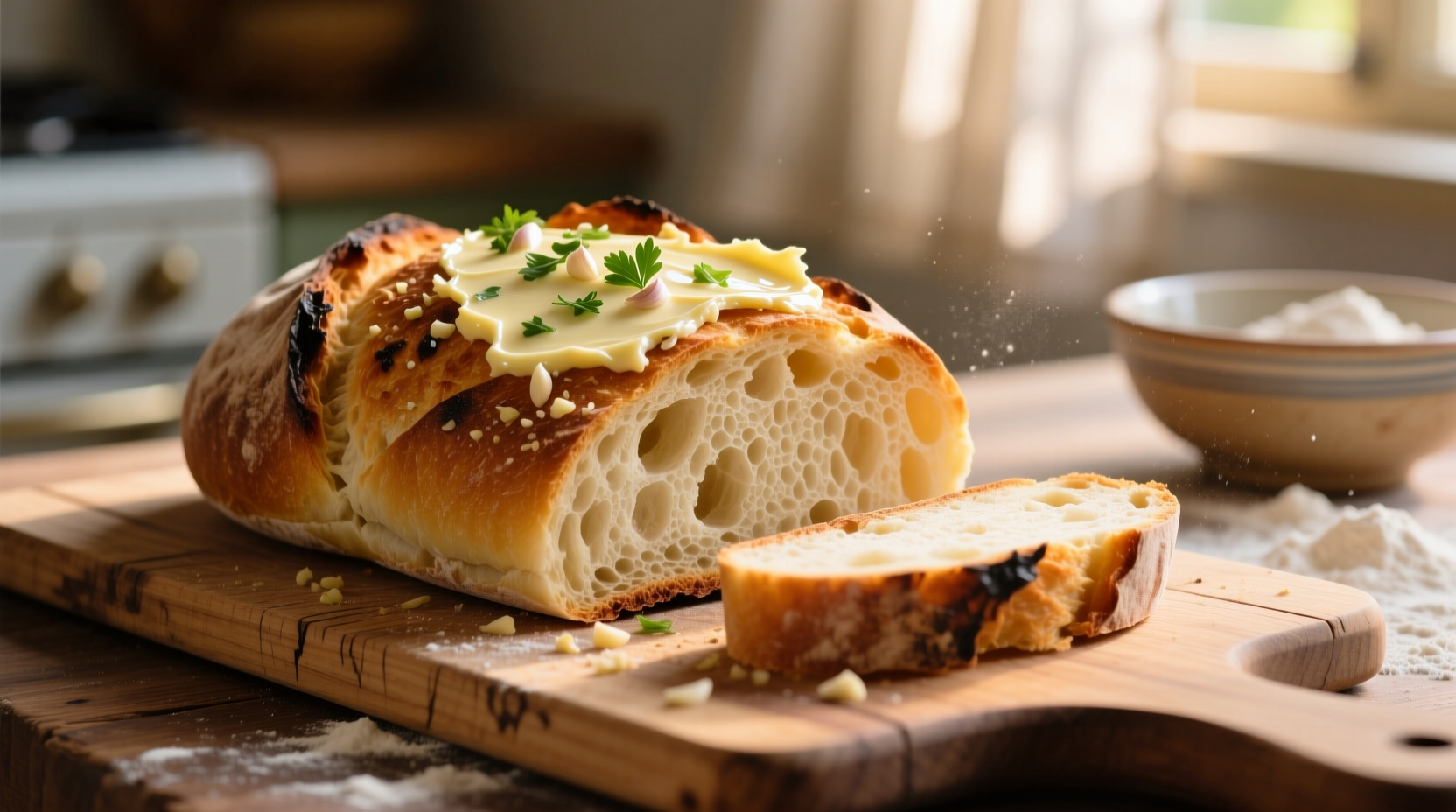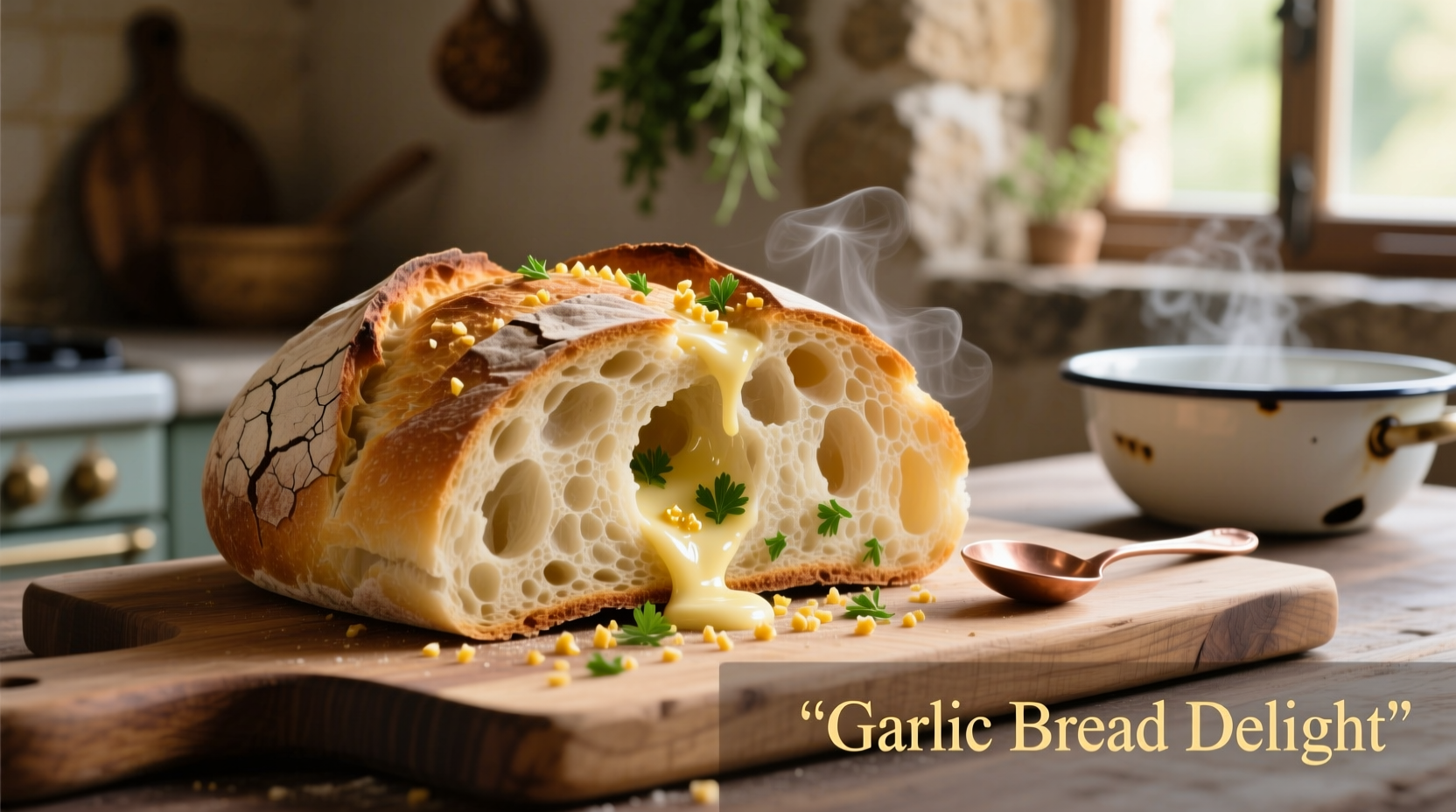The Essence of Authentic Italian Garlic Bread
When you search for "italian bread with garlic," you're likely looking for the genuine article—not the buttery, cheesy version popularized in American restaurants. True Italian garlic bread is a humble preparation rooted in cucina povera (poor kitchen) traditions, where minimal ingredients create maximum flavor. This distinction matters because many online recipes misrepresent authentic Italian culinary practices.
| Traditional Italian Preparation | Americanized Version |
|---|---|
| Crusty bread (like ciabatta or pane Toscano) | Soft sandwich bread or baguette |
| Fresh garlic cloves rubbed directly on bread | Garlic powder or minced garlic in butter |
| Extra virgin olive oil only | Butter as primary fat |
| No cheese added | Cheese (usually Parmesan or mozzarella) included |
| Served as accompaniment to meals | Served as standalone appetizer |
From Peasant Food to Global Favorite: A Culinary Timeline
Understanding the history of Italian bread with garlic reveals why authenticity matters. This simple preparation evolved through distinct phases:
- Pre-16th century: Garlic was widely used in Mediterranean cooking as both flavoring and preservative. Italian peasants rubbed stale bread with garlic and oil to refresh it.
- 16th-19th centuries: As tomatoes arrived from the Americas, some regions incorporated them, creating early versions of bruschetta.
- Early 20th century: Italian immigrants brought the concept to America, where butter and cheese were added to appeal to local tastes.
- Post-WWII: Americanized "garlic bread" became popular in Italian-American restaurants, diverging significantly from Italian traditions.
- 21st century: Food media has helped revive interest in authentic Italian preparations, though confusion between styles persists.

Essential Ingredients for Authentic Flavor
The magic of traditional Italian bread with garlic lies in ingredient quality and technique. Unlike American versions that mask flavors with butter and cheese, Italian preparation highlights the natural harmony of simple components.
Bread Selection: The Foundation
Choose a bread with:
- Crusty exterior that provides textural contrast
- Open crumb structure to absorb olive oil
- Mild flavor that won't compete with garlic
Ideal options include ciabatta, pane Toscano (Tuscan bread without salt), or a rustic country loaf. Avoid soft sandwich breads or baguettes with extremely hard crusts.
Garlic: Technique Over Quantity
The proper technique makes all the difference in how to make Italian bread with garlic:
- Cut bread into thick slices (¾-1 inch)
- Toast bread lightly until just crisp but still pliable
- While warm, rub cut side of a fresh garlic clove firmly across the surface
- Drizzle generously with high-quality extra virgin olive oil
- Add finishing touches like flaky salt, fresh rosemary, or a squeeze of lemon
This method releases garlic's essential oils without overwhelming the bread—a crucial distinction from recipes that use minced garlic, which creates an aggressively pungent flavor.
Regional Variations Across Italy
What many don't realize is that Italian garlic bread varies significantly by region. Understanding these differences helps you appreciate the dish's authentic context:
- Tuscany: Pane Toscano (saltless bread) with garlic and robust olive oil—often served with beans
- Rome: Crostini di pane with garlic, olive oil, and sometimes anchovies (a Roman Jewish tradition)
- Sicily: Pane con l'aglio e limone—featuring lemon zest with the garlic
- Naples: Often includes fresh oregano along with garlic
These regional differences highlight why there's no single "correct" version of authentic Italian bread with garlic, but all share the fundamental technique of rubbing fresh garlic on warm bread rather than incorporating minced garlic into a butter mixture.
Perfecting Your Technique: Common Mistakes to Avoid
Based on culinary research from Italy's leading cooking schools, these errors undermine traditional Italian garlic bread preparation:
- Using pre-minced garlic: Creates bitter, uneven flavor (fresh cloves release optimal compounds when rubbed)
- Adding garlic before toasting: Causes burning and acrid flavor (garlic should contact warm, not hot, bread)
- Over-oiling: Makes bread soggy rather than enhancing texture (quality olive oil should be used sparingly)
- Adding cheese: While delicious, this creates an Americanized version, not authentic Italian preparation
When to Serve Italian Garlic Bread
Understanding proper context for Italian bread with garlic completes your authentic experience:
- Serve alongside soups, stews, or bean dishes (traditional Tuscan pairing)
- Offer as part of an antipasto spread with cured meats and cheeses
- Use as a vehicle for mopping up sauces from main courses
- Enjoy with a simple green salad for a light meal
Unlike American garlic bread served as a standalone appetizer, authentic Italian preparation functions as a practical accompaniment that enhances other dishes without dominating them.
Creating Your Own Authentic Version
Follow this simple method for the best Italian bread with garlic at home:
- Select a rustic loaf with good crust (ciabatta works perfectly)
- Cut ¾-inch thick slices and toast until golden but still flexible
- Rub cut side of 1-2 fresh garlic cloves firmly across each slice
- Drizzle with 1-2 teaspoons of high-quality extra virgin olive oil per slice
- Season with flaky sea salt and fresh rosemary (optional)
- Serve immediately while bread is warm and olive oil is fragrant
This preparation takes just 15 minutes and requires only four ingredients. The result captures the essence of traditional Italian bread with garlic—simple, flavorful, and deeply satisfying without being heavy.











 浙公网安备
33010002000092号
浙公网安备
33010002000092号 浙B2-20120091-4
浙B2-20120091-4